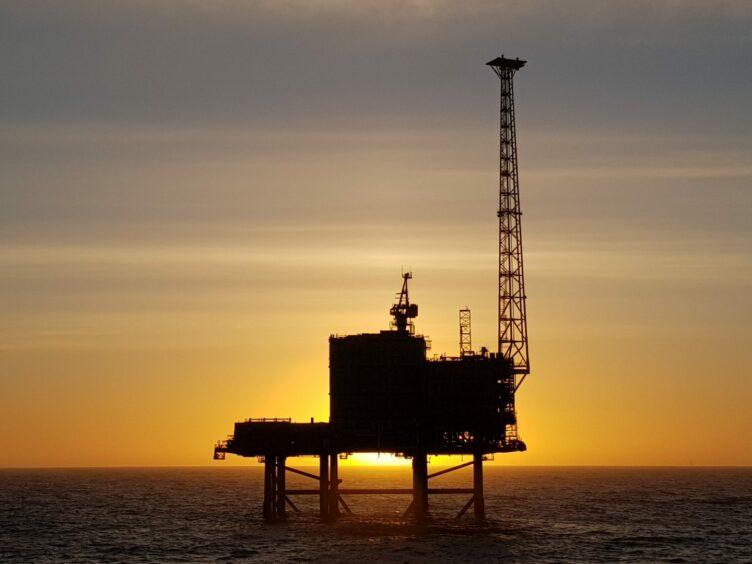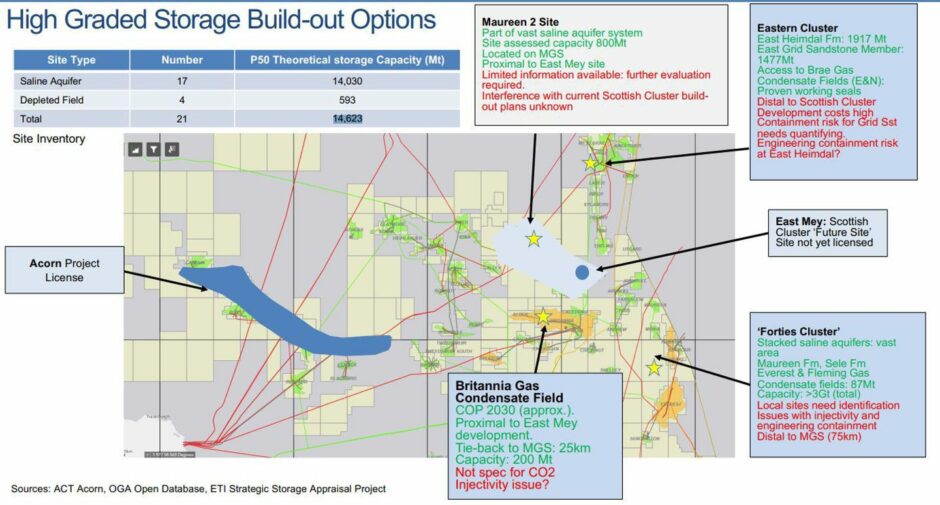
Analysis by NECCUS partners suggests around $1 billion would be needed to develop nearly 30 wells in key North Sea reservoirs to provide sufficient CO2 storage capacity for its decarbonisation plans.
Prepared by Halliburton Consulting – an arm of the global oilfield services group – the research estimates that the development of 28 wells at three key North Sea hubs could offer enough storage capacity to meet the demands of the Scottish Cluster.
The Cluster includes most of the top 25 largest emitters in the country which collectively accounted for around 76% – roughly 8.6 million tonnes – of Scotland’s industrial CO2 emissions in 2019.
Under their plans, emissions captured from power, industrial process and the production of blue hydrogen across Scotland would be captured and stored in offshore reservoirs, including via the north east’s Acorn project.
Acorn aims to capture and store around 300,000 tonnes of CO2 per year in its first phase, while later phases will see further volumes added from direct air capture, a sister north-east hydrogen scheme and other industrial emitters.
The work was unveiled as part of a presentation during the launch of the Scottish Net Zero Roadmap (SNZR) roadmap by alliance group NECCUS in March.
Storage hubs and Scottish CCS
For its contribution to the cluster work scope, Halliburton prepared screening analysis for potential CO2 storage sites, including build out options and expected capacity. Analysts also assessed injectivity potential and the number of wells required at each site or hub, as well as potential transport routes.
Six high-grade areas were evaluated, including the Acorn offshore licence area, the Maureen 2 site, an Eastern Cluster at Brae and Heimdal, East Mey, a Forties Cluster, and the Britannia gas condensate field.
Together they offered a total of roughly 14.6 billion tonnes of P50 theoretical CO2 storage capacity.
Four potential well types were considered, involving re-completion, either deep or shallow sidetracks, or the drilling of new platform wells.
A shortlist of three top sites was further developed, with Haliburton business development manager Rebecca Lee suggesting four wells would be needed at Acorn South, East and Central, with carbon dioxide piped to the reservoir via the Goldeneye, Cromarty and Atlantic pipelines.
With CO2 sequestered in Captain Sandstone, these four wells would offer P50 mid-case capacity of around 150 million tonnes, the researchers found.
An additional four wells at East Mey, close to the Balmoral oil field, would unlock a further 152 million tonnes of capacity, with shipments sent via the Miller Gas System (MGS) pipeline.
Previous research papers indicate the area contains several useful storage structures, including the Balmoral, Beauly, Blair, Brenda, Burghley, Glamis, and Stirling fields.
Finally, 20 wells at the decommissioned Maureen field around 160 miles north-east of Aberdeen could unlock mid-case storage capacity of around 800 million tonnes, with volumes also sent via the MGS.
In total, Halliburton said the roughly 1.1 billion tonnes of cumulative capacity would be enough to meet the demands of the Cluster during the 2022-2045 injection period, with an assumed cost of around $1 billion for the 28 well developments required.
As to the likelihood and timeline for the work, everything now depends on the upcoming Track 2 CCS process, in which Acorn has been dubbed a “leading contender”.
Track 2 bids must be submitted by April 28, though so far no detail has been given on when a selection will officially be made and funding allocated.
Recommended for you

 © Supplied by Halliburton Consulti
© Supplied by Halliburton Consulti